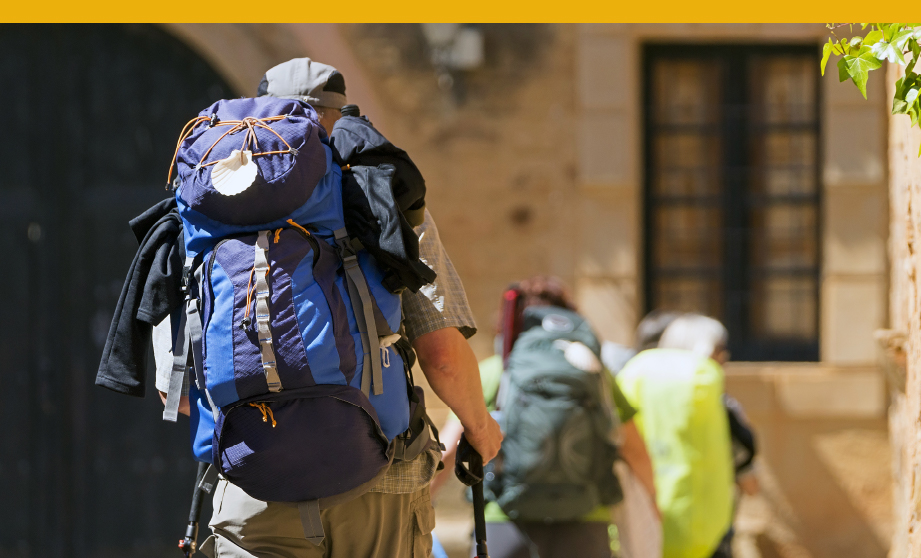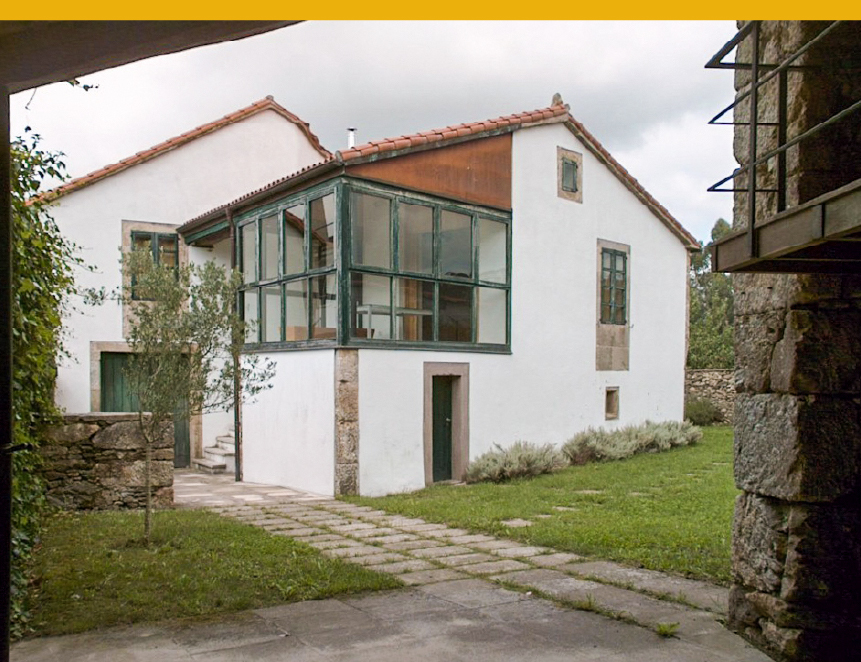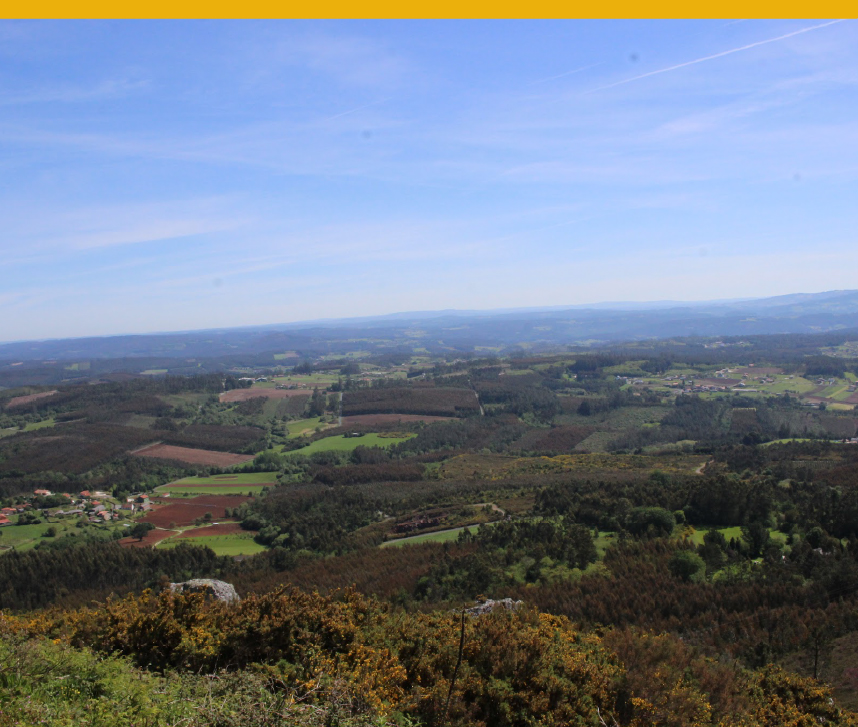CAMINO DE SANTIAGO ROUTES
CAMINO DE SANTIAGO ROUTES
Being located on the approach to Compostela, three Camino de Santiago routes pass through Boqueixón, two official ones and another under study: the “Vía de la Plata” route, the Winter Way, and the Miñoto-Ribeiro route, respectively. Therefore, the Camino de Santiago routes play an essential role and provide added value to the singularity of this Boqueixón parish.
"Vía de la Plata"
The most famous of the three itineraries is the “Vía de la Plata,” with Lestedo being one of the stopping points in the route’s last stage (Silleda-Compostela).
Thousands of pilgrims travel along the “Vía de la Plata” every year. Different improvements have been made to enhance their experiences, such as the area beside Lestedo’s sports hall, which has been equipped to accommodate the large pilgrim groups that usually come through in the summer months.
The “Vía de la Plata” is Galicia’s longest Way of St. James since it passes through the provinces of Ourense, Pontevedra, and A Coruña, featuring beauty spots with rich natural and cultural heritage. Due to its great length, the “Vía de la Plata” route offers different options for entering Galicia from northwest Portugal, with the Sil basin being the traditional entry point.


Winter Way
This route’s name comes from the fact that it was used by the Romans and pilgrims during winter in order to avoid snowfalls in O Cebreiro (on the French Way). This itinerary is the natural entrance to Galicia from Castile and Leon and was used as an alternative to the French Way.
With a length of almost 240 kilometres, it runs from Ponferrada (starting at the World Heritage Site of Las Médulas) to Santiago. It stands out as the only Camino route that passes through Galicia’s four provinces, featuring areas of great scenic beauty and cultural value. Namely, Valdeorras (in Ourense), Ribeira Sacra (with impressive views of the Sil and Miño river basins, between the provinces of Ourense and Lugo), and O Deza, in the province of Pontevedra. Here the itinerary merges with the “Vía de la Plata” route before heading to the Compostela area (in A Coruña).
The last stage (Rubial-Santiago), which is just over 12 kilometres long, passes through Boqueixón municipal district. Those travelling along this route also have the chance to discover the locality of Lestedo, with Pico Sacro as the main attraction. It is recommendable to stop here to enjoy the bird’s-eye panoramic views of this sacred hill and discover the place’s history in the Interpretation Centre in the village of Cachosenande.
The Winter Way
The Winter Way’s name comes from the fact that it was used by the Romans and pilgrims during winter in order to avoid snowfalls in O Cebreiro (on the French Way). This itinerary is the natural entrance to Galicia from Castile and Leon and was used as an alternative to the French Way.
With a length of almost 240 kilometres, it runs from Ponferrada (starting at the World Heritage Site of Las Médulas) to Santiago. It stands out as the only Way of Saint James that passes through Galicia’s four provinces, featuring areas of great scenic beauty and cultural value. Namely, Valdeorras (in Ourense), Ribeira Sacra (with impressive views of the Sil and Miño river basins, between the provinces of Ourense and Lugo), and O Deza, in the province of Pontevedra. Here the itinerary merges with the “Vía de la Plata” route before heading to the Compostela area (in A Coruña).
The last stage (Rubial-Santiago), which is just over 12 kilometres long, passes through Boqueixón municipal district. Those travelling along this route also have the chance to discover the locality of Lestedo, with Pico Sacro as the main attraction. It is recommendable to stop here to enjoy the bird’s-eye panoramic views of this sacred hill and discover the place’s history in the Interpretation Centre in the village of Cachosenande.

Miñoto-Ribeiro route
Recognised by the Church as a Camino route in 2020, this itinerary is about to receive official recognition from the Galician Government. It is one of the oldest linking the north of Portugal and Compostela. In fact, a large part of its length runs along the same trails, Roman roads, and medieval tracks that were used by pilgrims in the past to reach the Apostolic City.
It was created as an alternative to the coastal route via Tui and Valença, entering and crossing inland Galicia. The Miñoto-Ribeiro route, which stands out due to three singular elements –Nature, Hydrotherapy, and Wine– has three entrances from Portugal:
- Main itinerary: from Braga to Vilaverde via Puente de la Barca, Arcos de Valdevez, Monçao, and Melgaço, passing through the Galician municipalities of Padrenda, Pontedeva, Cortegada, Arnoia, Castrelo de Miño, Ribadavia, Beade, Leiro, O Carballiño, Boborás, Beariz, Forcarei, A Estrada, Vedra, Boqueixón, and Santiago
- Braga, Ponte da Barca, Ermelo, Lindoso towards Baixa Limia, Lobios and Entrimo, Castro Leboreiro, where it merges with the main itinerary
- Tierras de Bouro to the surroundings of the village of Lobios, Entrimo, and Castro Leboreiro, where it merges with the main itinerary
